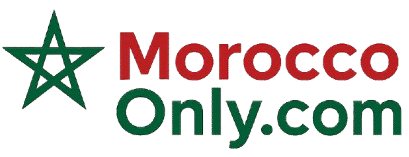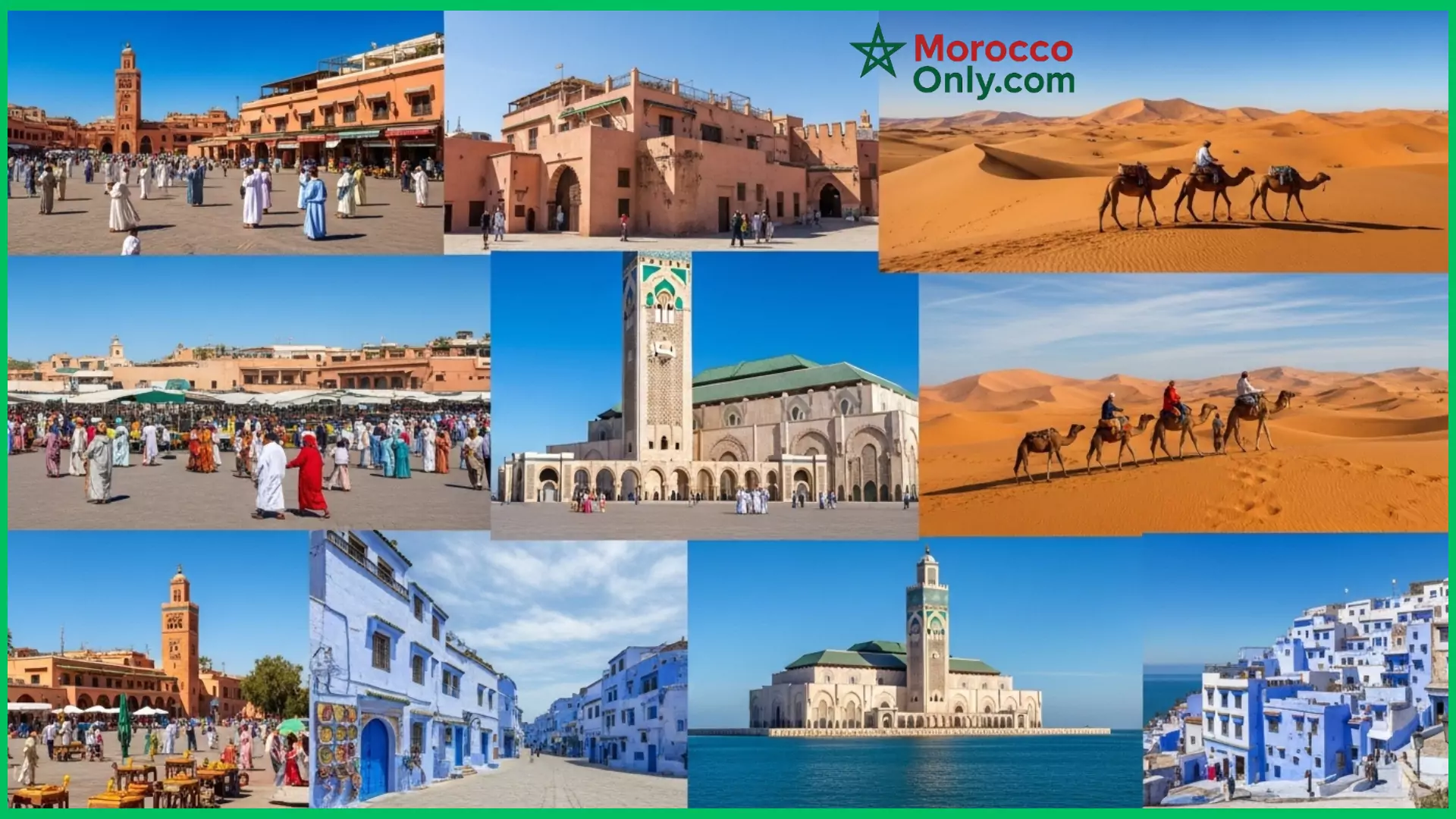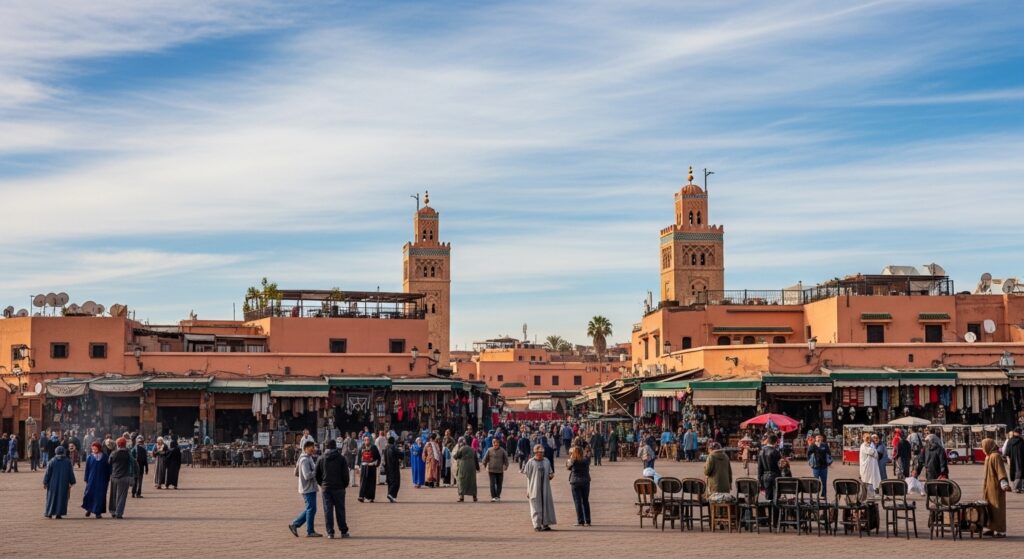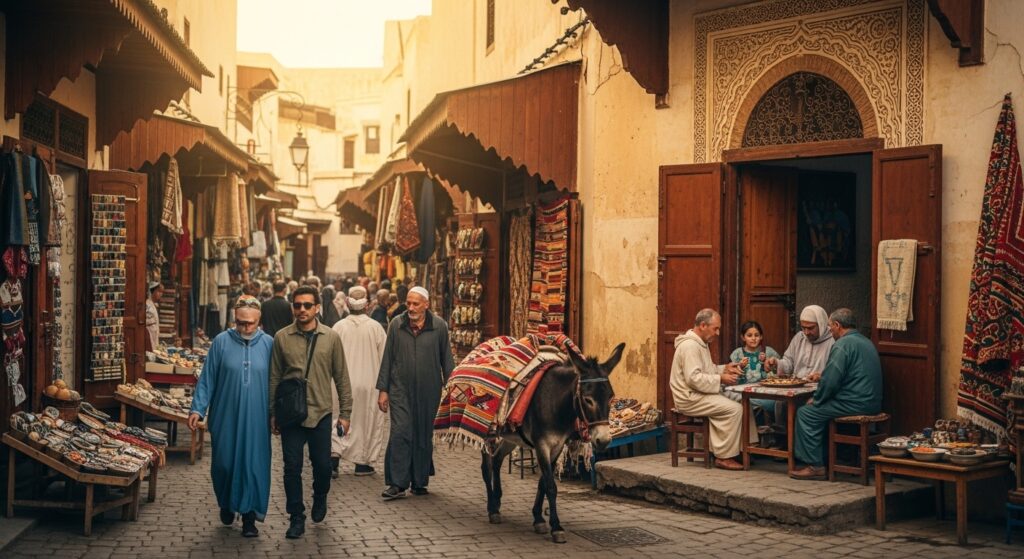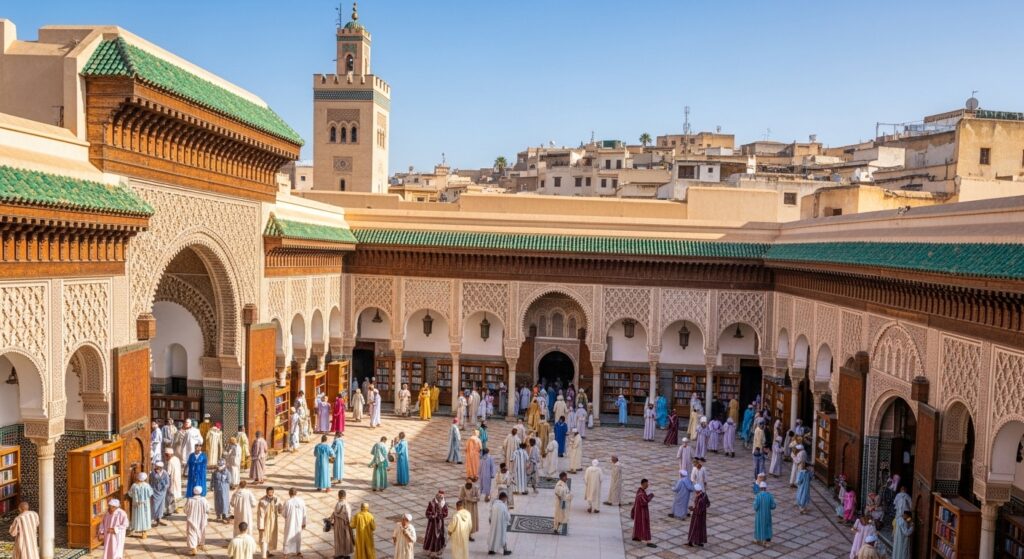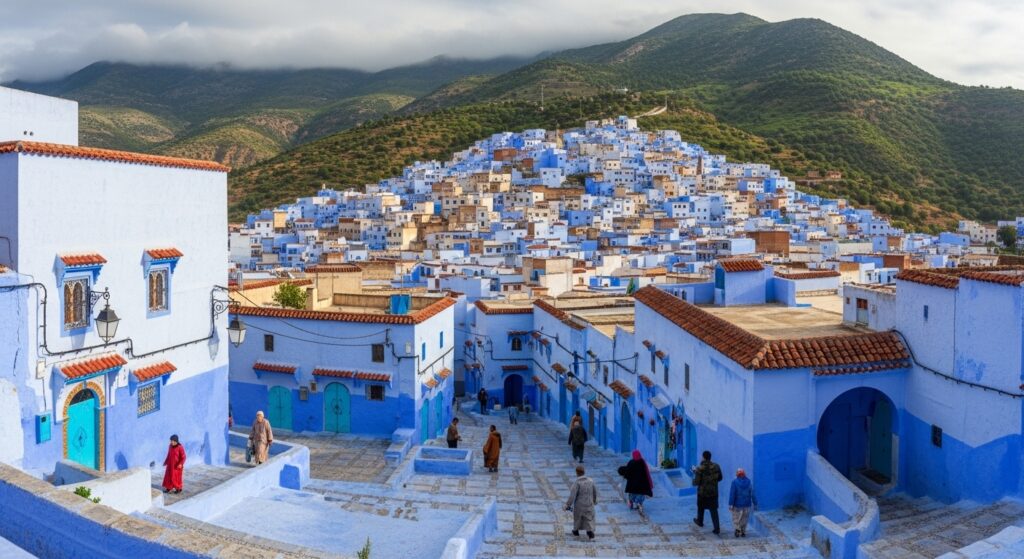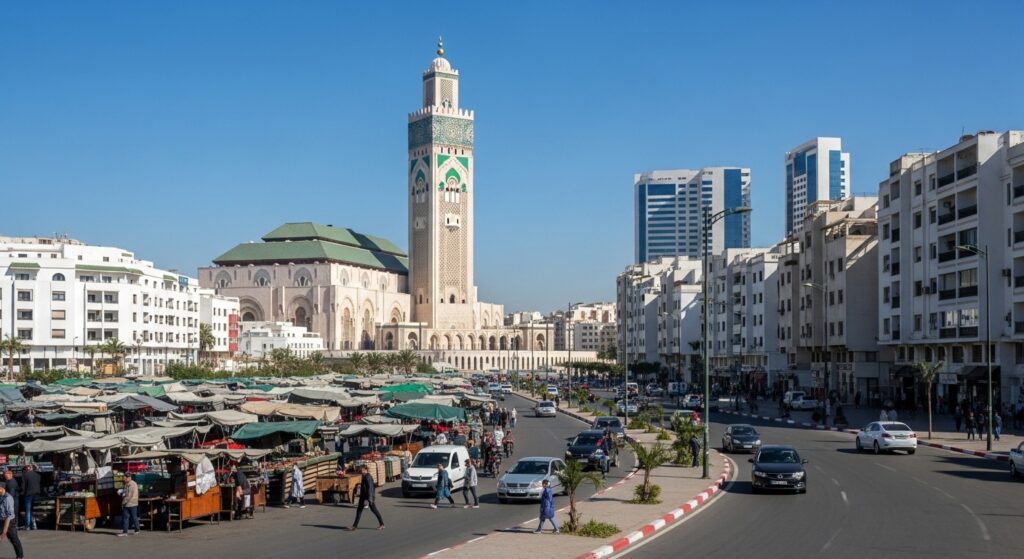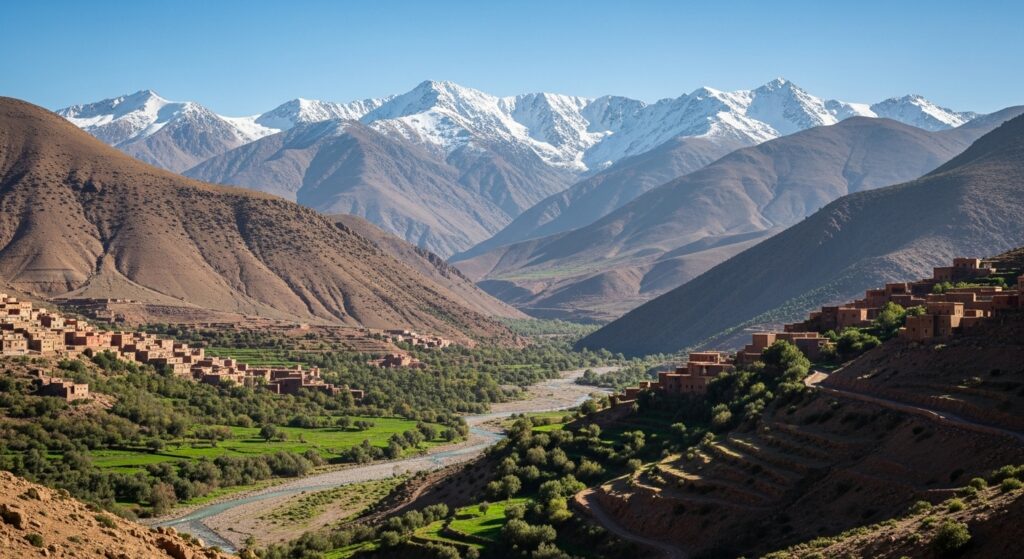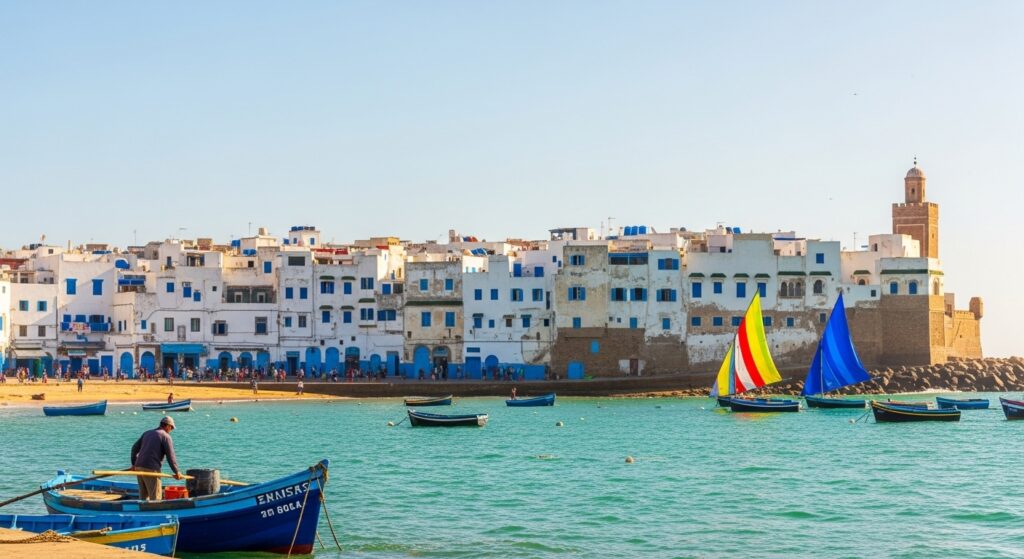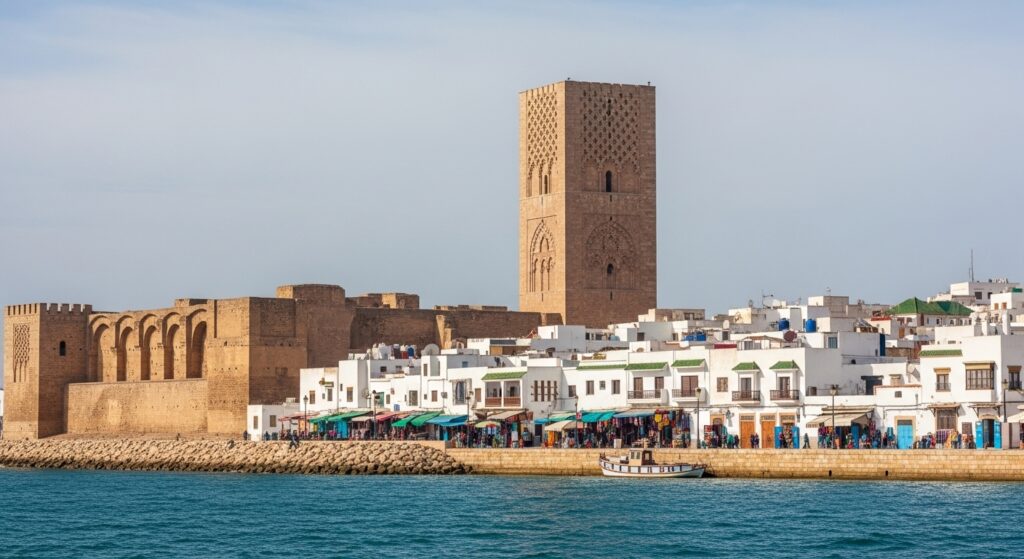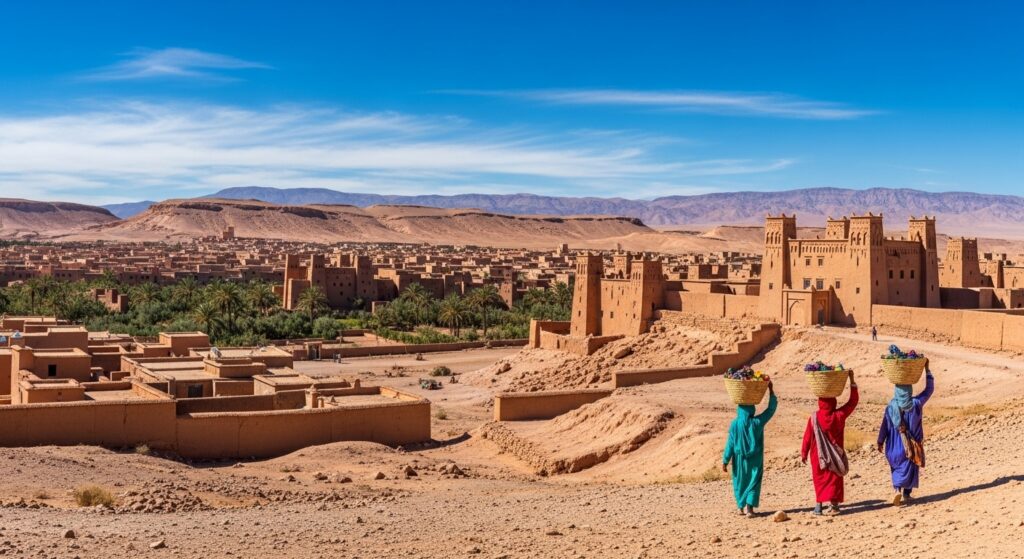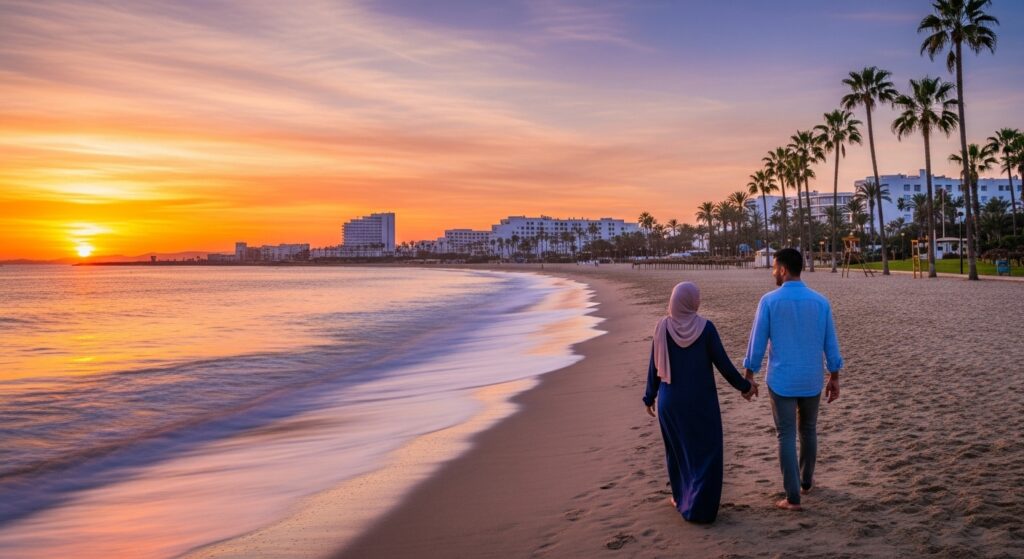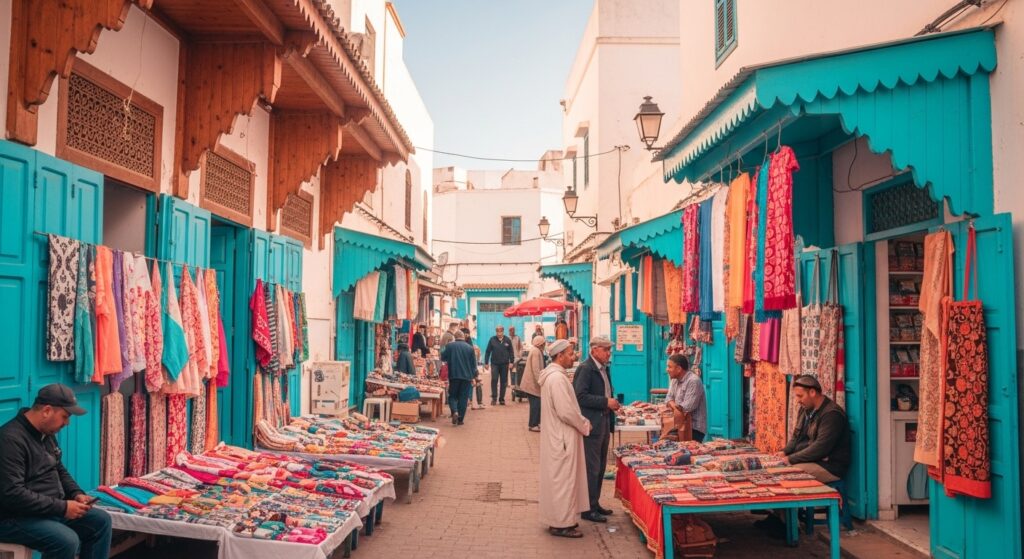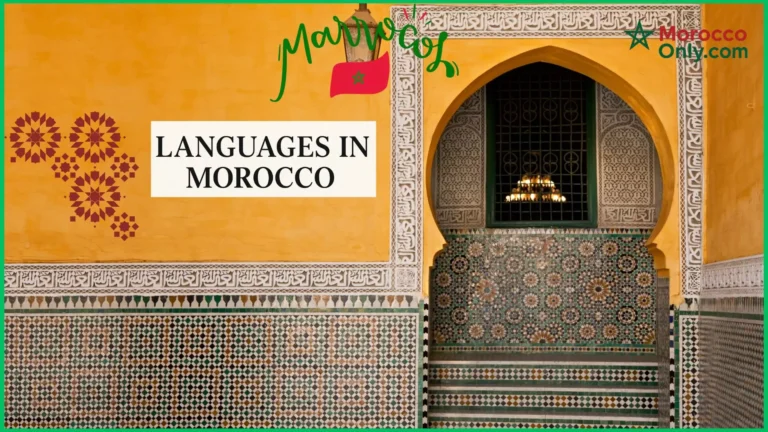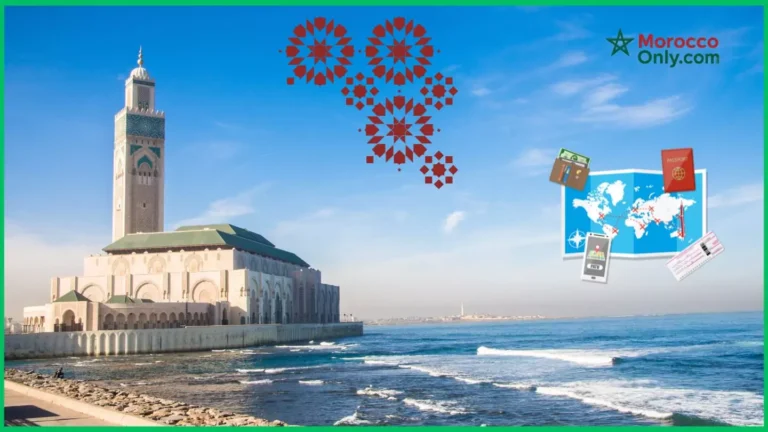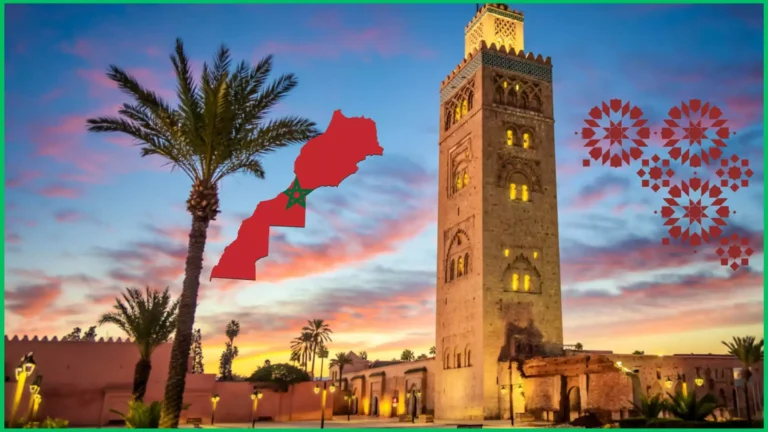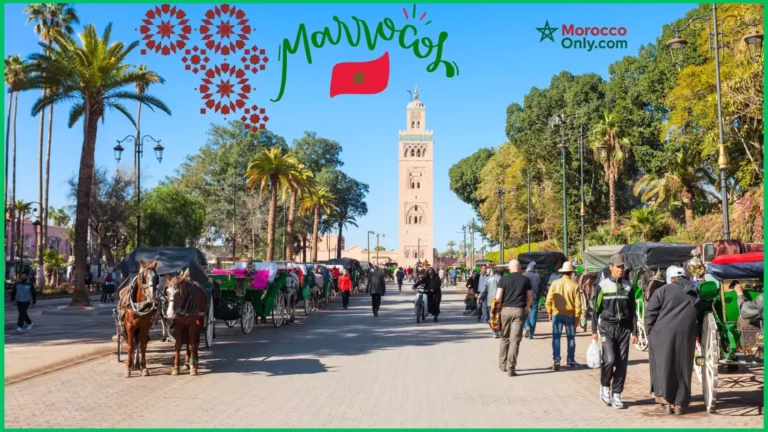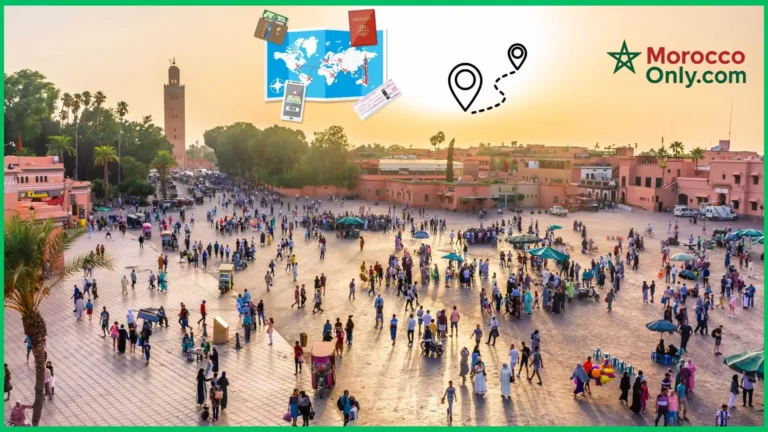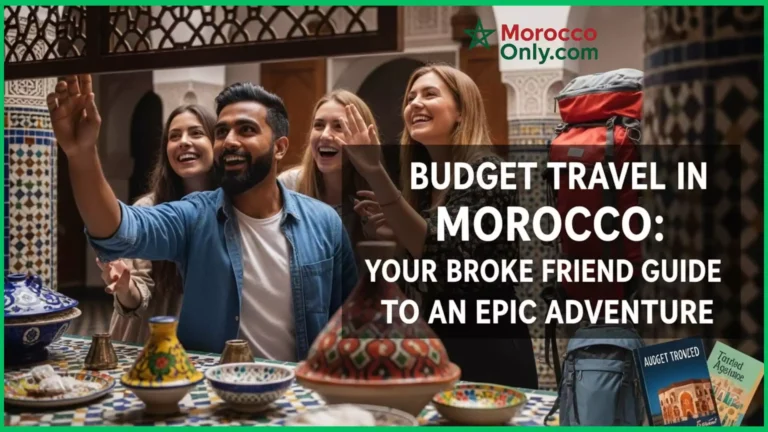Discover the Best Tourist Destinations in Morocco
So let me tell you about Morocco – this place is absolutely wild in the best possible way! Picture this: you’ve got ancient traditions bumping up against modern life everywhere you look, creating this incredible mix that’ll blow your mind. I’m talking Arab, Berber, and French influences all mashed together in the coolest way possible, and trust me, you’ll see it in everything from the crazy-beautiful buildings to the food that’ll make you want to cry happy tears.
The landscapes here? Seriously, there’s no end to it! You can literally go from snow-covered mountains to enormous sand dunes on the same day. I mean, where else can you do that?! And the cities – wow, they’re all different! Some are vibrant, imperial cities that are constantly alive with activity and some are more relaxed, coastal towns where time stands still.
Here’s the thing that’ll hit you right away – your senses are gonna be on overload (in a good way!). The air smells like mint tea, amazing spices, and orange blossoms. You’ll hear prayers echoing through the streets, traditional music that gets stuck in your head, and the most animated haggling you’ve ever witnessed. And the colors! Everywhere you look there’s vibrant textiles and these gorgeous geometric patterns that craftspeople have been perfecting for centuries.
Why Morocco Should Be Your Next Travel Destination
Look, I’ve been to a lot of places, but Morocco? It’s got something for literally everyone. History buff? You’ll geek out over medinas that are thousands of years old. Love nature? You’ll be spoiled rotten with everything from perfect surf beaches to mountain trails that’ll challenge you in the best way. Want to really dive into a different culture? Get ready for cooking classes, traditional spa experiences, and staying in these amazing riads that’ll make your Instagram followers super jealous.
And here’s what’s great – it’s actually pretty easy to get around Morocco. The tourism game is strong here, so you don’t have to rough it unless you want to. Plus, if you’re coming from Europe, it’s basically next door. And can we talk about how far your money goes? You can live like royalty without breaking the bank, which means more money for all the cool experiences and that gorgeous handmade rug you’re definitely gonna want to buy.
But honestly, the people are what make it and Moroccan hospitality isn’t just a phrase, they will literally bring you into their home for tea and feel like family. Trust me, you’ll have more than photos to come back with.
Marrakesh – The Red City
Jemaa el-Fnaa – A Cultural Spectacle
Alright, brace yourself for Jemaa el-Fnaa because this place is like nothing you’ve ever seen. It’s basically a giant outdoor theater that changes its show all day long. In the morning, you’ve got fruit vendors setting up shop (their orange juice is insanely good, by the way). Come afternoon, and suddenly there are snake charmers and henna artists everywhere – yeah, it’s as crazy as it sounds!
But wait until evening hits – that’s when the real magic happens. The whole square turns into this massive food court, and I’m talking about the most amazing street food you’ll ever taste. From fresh orange juice squeezed right in front of you to these incredible tagines that’ll make you question every meal you’ve ever had. Fair warning though – it can feel totally overwhelming at first, but just go with it. That’s where the real Morocco lives.
Oh, and UNESCO thinks this place is pretty special too – they called it a “Masterpiece of Oral and Intangible Heritage,” which is fancy talk for “this place is absolutely incredible and we need to protect it.” You’ll see acrobats doing things that seem to defy physics, musicians creating this hypnotic atmosphere that’ll pull you in, and around the edges, these narrow little streets that lead to hidden courtyards and traditional spas. It’s like a treasure hunt where every turn reveals something cooler than the last.
Majorelle Garden – A Botanical Gem
Okay, so after all that craziness in the medina, you’re gonna need a breather, and Majorelle Garden is exactly what the doctor ordered. This place has quite the story – it was created by this French painter in the 1920s, then later saved by Yves Saint Laurent (yeah, the fashion guy). And thank goodness he did, because this place is pure magic.
The first thing that’ll hit you is this incredible blue color they use on all the buildings – it’s called Majorelle Blue, and it pops against all the exotic plants like you wouldn’t believe. We’re talking bamboo groves that make you feel like you’re in a fairy tale, massive cacti that look like they’re from another planet, and these peaceful water features that are perfect for those moments when you need to just sit and soak it all in.
The garden has over 300 different plants from all over the world – I mean, the guy really went all out! Plus there’s this cool Islamic Art Museum where you can check out Saint Laurent’s personal collection of North African stuff. Pro tip: go early morning or late afternoon for the best photos and fewer crowds. Trust me, you’ll want to take about a million pictures here, and you’ll actually be able to enjoy the peace and quiet if you time it right.
Fes – The Spiritual and Cultural Capital
Exploring the Historic Medina of Fes
Okay, get ready for this – the Fes medina is the world’s biggest car-free zone, and honestly? Getting lost in here is half the fun. I’m not even kidding when I say there are 9,000 narrow streets and dead ends. You could hire a guide (which isn’t a bad idea), but sometimes the best adventures happen when you have no clue where you’re going.
This place operates exactly like it did hundreds of years ago – we’re talking donkeys and mules carrying goods through streets so narrow you can touch both walls at once. It’s like stepping into a time machine, except with better Wi-Fi (in some spots).
You absolutely have to check out the Chouara Tannery – yeah, it smells pretty intense, but watching them work leather the same way they’ve been doing it for over 1,000 years is mind-blowing. And the spice markets? Forget everything you think you know about spice shops. We’re talking pyramids of colorful spices that look like art installations, and the vendors will let you smell everything. Just don’t go there hungry because you’ll end up buying way more than you need (not that that’s necessarily a bad thing).
Al Quaraouiyine University – The World’s Oldest University
Here’s something that’ll blow your mind – this university is older than Oxford and Cambridge combined. We’re talking 859 CE, which is just insane when you think about it. Some woman named Fatima al-Fihri founded it, and it’s been running continuously ever since. Guinness World Records and UNESCO both agree – this is the real deal.
The library here has manuscripts that are older than most countries, including a 9th-century Quran that’ll give you chills just looking at it. And the architecture? It’s like someone took all the most beautiful Islamic design elements and cranked them up to eleven. The geometric patterns, the carved cedar, the tilework – it’s all absolutely stunning.
Now, heads up – if you’re not Muslim, you can’t go into the prayer areas, but you can admire the outside and visit the museum next door. Honestly, just seeing this place from the outside and learning about its history is pretty incredible. This is where some of history’s greatest minds came to learn and teach. Pretty cool to think about while you’re standing there, right?
Chefchaouen – The Blue Pearl
Wandering Through Blue-Washed Streets
Alright, so you know how everyone’s always posting those gorgeous blue city photos on Instagram? Yeah, this is where they come from, and let me tell you – the pictures don’t even do it justice. Chefchaouen is tucked up in these mountains, and literally everything is painted this incredible shade of blue. The story goes that Jewish refugees started the blue thing in the 1930s as a way to remember heaven, and honestly, walking through these streets does feel pretty heavenly.
The medina here is way more chill than the crazy ones in bigger cities. You can actually wander around without feeling like you’re gonna get trampled or completely lost. The narrow cobblestone streets wind past these blue doorways with colorful flower pots, and every corner is basically a perfect photo op. You’ll see local women in these gorgeous striped traditional outfits that add these amazing splashes of color against all the blue.
The pace here is just… different. It’s slower, more relaxed. People actually have time to chat, and you’ll find yourself just sitting in little cafes, sipping mint tea, and wondering why everywhere else feels so rushed. Plus, the shopping is great – lots of locally made textiles and crafts that you won’t find anywhere else.
Best Photo Spots in Chefchaouen
let’s be real – you’re gonna want to take about a thousand photos here, so let me give you the insider scoop on the best spots. That famous blue staircase everyone posts? It’s near the Grand Mosque, and the way the light hits it throughout the day is just magical. Seriously, go back at different times because it looks completely different in morning light versus golden hour.
If you’re up for a little hike, the Spanish Mosque gives you this incredible view of the whole blue city nestled in the green mountains. Sunrise and sunset up there? Chef’s kiss – absolutely spectacular.
Inside the medina, there’s this waterfall called Ras El Maa that creates this cool natural backdrop to all the blue buildings. The main square, Plaza Uta el-Hammam, is where all the action happens – great for people watching and getting those candid shots of daily life.
Pro tip: have patience when photographing. A photo can look completely different in different light. An area in the shadows can appear deep blue and moody, but in the sunlight? It’s as if someone sprinkled some fairy dust, and it’s an electric blue that will make your camera happy (and your eyes!)
The Sahara Desert – An Unforgettable Experience
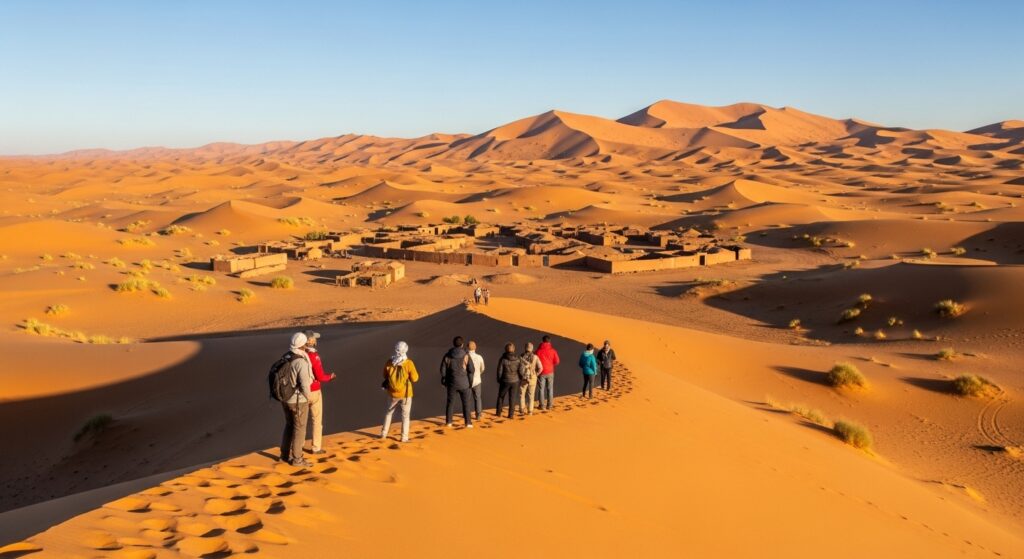
Camel Trekking and Desert Camping
So this is probably gonna be one of those experiences you’ll be talking about for the rest of your life. Most people start their Sahara adventure from this little town called Merzouga, which is basically the gateway to these massive sand dunes – we’re talking 500 feet tall, which is pretty nuts when you’re standing at the bottom looking up.
The camel thing is… well, it’s an experience. Fair warning – your legs are gonna feel it the next day, and the swaying motion takes some getting used to. But once you settle in, there’s something almost meditative about it. You’re out there in this endless sea of golden sand, and time just seems to disappear.
The desert camps vary from basic (imagine Berber tents) to exotic to luxurious with real beds and bathrooms. No matter what style you choose you will enjoy traditional Berber music around the campfire, which truly is magical. To lay back and watch more stars than you’ve ever seen in your life, while listening to traditional drums and instruments is something special.
Best Time to Visit the Sahara
Timing is everything with the Sahara, trust me on this one. You definitely want to go between October and April when the days are warm but not brutal (we’re talking 70-85°F instead of the 120°F+ you get in summer). But here’s the thing nobody tells you – it can get surprisingly cold at night, sometimes even freezing in winter, so pack layers!
If you’re into stargazing (and honestly, who isn’t?), try to time your visit with a new moon. The night sky out there is absolutely insane – you can see the Milky Way so clearly it’ll give you goosebumps. City folks especially are gonna lose their minds over how many stars are actually up there.
And sunrise in the Sahara? Life-changing stuff. Most people climb up the biggest dune they can find before dawn and watch the sun come up. The way the light gradually hits the dunes and changes from purple to orange to gold… yeah, it’s one of those moments that makes you feel pretty small and pretty grateful at the same time.
Casablanca – The Modern Face of Morocco
Hassan II Mosque – A Modern Marvel
So Casablanca gets a bad rap sometimes – people think it’s just a business city without much character. But let me tell you about the Hassan II Mosque, because this thing is absolutely incredible. It’s sitting right on the Atlantic coast, and it’s one of the biggest mosques in the world. The minaret is 690 feet tall and works as a lighthouse – how cool is that?
This place was finished in 1993, so it’s relatively new, but the craftsmanship is mind-blowing. They can fit 105,000 people (yeah, you read that right), and the main prayer hall has this retractable roof that opens up to the sky in three minutes. Imagine sitting there and suddenly the roof just opens up above you!
The whole thing showcases traditional Moroccan craftsmanship but with modern engineering. We’re talking marble, wood, and those gorgeous zellige tiles, plus things like underfloor heating and earthquake-resistant construction. Even if you’re not particularly religious, the artistry and scale of this place will definitely impress you.
The Urban Vibe and Coastal Charm
Locals call it Casa, but it’s Morocco’s New York – there is a vibrancy and cosmopolitan atmosphere that feel unlike any other city. The mix of colonial French Art Deco architecture , the modern day skyscrapers and Moroccan buildings shouldn’t work or blend together, but somehow they do.
The Corniche area along the waterfront is where you’ll find upscale beaches, trendy restaurants, and nightlife that could hold its own against European cities. It’s a totally different side of Morocco that a lot of people miss.
The food scene here is incredible – you’ve got world-class restaurants doing innovative takes on Moroccan cuisine alongside amazing international options. And if you need to do some serious shopping, the Morocco Mall is one of the biggest in Africa. But don’t worry, you can still get your traditional souk experience in the Habous Quarter, which has a more modern twist but keeps that authentic feel.
Atlas Mountains – A Nature Lover’s Paradise
Hiking in the High Atlas
If you’re into hiking, the Atlas Mountains are gonna be your happy place. Jebel Toubkal is North Africa’s highest peak at over 13,000 feet, and climbing it is definitely doable if you’re in decent shape. It usually takes 2-3 days, and you’ll go through these crazy different ecosystems – from Mediterranean-style vegetation down low to alpine conditions up top.
There are mountain refuges where you can spend the night, and while they’re not exactly luxury hotels, they’re comfortable and the mountain views are unreal. Plus, having a local guide isn’t just helpful for navigation – they’ll tell you stories and share local knowledge that makes the whole experience way richer.
However, Toubkal isn’t the only game in town. The Mgoun Massif has these stunning multi-day treks through rose valleys and traditional villages, while the Azzaden Valley has easier day hikes through walnut groves and terraced fields that you feel like you are walking through a storybook. Spring and fall are the ideal times for hiking adventures because of the weather and photography opportunities.
Visiting Berber Villages
This is where you’ll really get a feel for the “real” Morocco. These traditional Berber villages scattered throughout the mountains look like they’ve been there forever (and many of them basically have been). They’re built from local stone and clay, and they blend into the mountainous landscape so perfectly it’s almost like they grew out of the rock itself.
A lot of villages offer homestays, which is honestly one of the coolest ways to travel. You’ll get to help with daily stuff like making bread, preparing tea, and learning traditional crafts. The families are incredibly welcoming, even when there’s a language barrier – somehow you always manage to communicate through smiles and gestures.
Each village has its specialty too. Imlil is famous for apple orchards (the apple juice there is incredible), while the Ait Bougmez Valley is known for organic farming. The hospitality is next level – people will literally share their meals with you and treat you like family. It’s pretty humbling and definitely gives you a deeper appreciation for Berber culture and their traditional way of life.
Essaouira – The Windy City by the Sea
Seafood and Souks by the Shore
Essaouira is like Morocco’s laid-back beach town, and it’s got this really unique vibe thanks to the constant Atlantic winds that keep things cool year-round. The medina here is a UNESCO site, but it’s got this different feel because of all the Portuguese, French, and Moroccan influences mixed together.
The fishing port is still super active, and you can literally watch the blue boats come in with their catch and then eat that same fish a few hours later at the harbor-side restaurants. It doesn’t get much fresher than that! The seafood here is some of the best I’ve ever had, and it’s surprisingly affordable.
The souks here specialize in things you won’t find elsewhere, especially stuff made from thuya wood, which is this local tree that smells amazing and has these beautiful grain patterns. You can watch artisans making everything from small boxes to furniture, and a lot of the workshops welcome visitors. There’s also a pretty cool contemporary art scene here – lots of galleries showcasing local artists who are inspired by the unique coastal light.
Water Sports and Kite Surfing
If you’re into water sports, Essaouira is basically paradise. The consistent winds and protected bay make it one of the world’s best kitesurfing spots. The winds are strongest April through September, and you’ll see people from all over the world coming here to ride the waves. Don’t worry if you’ve never tried it – there are plenty of schools that’ll get you started, and equipment rental is easy to find.
The beach itself stretches for miles in both directions, so there’s plenty of room for everyone. You can rent traditional blue fishing boats for coastal trips, or if you want something more chill, horse and camel rides along the beach are pretty magical, especially at sunset.
There are these little islands called Iles Purpuraires that you can visit by boat during low tide – they’re great for bird watching, especially if you’re there during migration season when birds are traveling between Europe and Africa. It’s a nice change of pace from all the cultural sightseeing.
Rabat – The Capital’s Hidden Beauty
Historical Sites and Modern Architecture
Rabat is one of those cities that people often skip, which is honestly a mistake because it’s got this really sophisticated vibe without all the tourist chaos. Being the political capital, it’s got some impressive historical stuff mixed with modern governmental buildings, and it all works together really well.
The Hassan Tower is pretty cool – it was supposed to be the world’s biggest minaret back in 1195, but they never finished it. It’s sitting right next to the modern Mausoleum of Mohammed V, where the current king’s grandfather and father are buried. The contrast between old and new is really striking.
The Kasbah of the Udayas is this 12th-century fortress with ocean views and these gorgeous Andalusian gardens. The houses inside are painted blue and white, which gives it almost a Greek island vibe. And if you’re into history, the Archaeological Museum has some really impressive pre-Islamic artifacts and Roman mosaics that’ll give you perspective on just how long people have been living in this area.
Peaceful Parks and Gardens
One thing Rabat does really well is green space. After all the intensity of places like Fes and Marrakesh, the parks here are incredibly refreshing. The Andalusian Gardens in the Kasbah are designed using traditional Islamic principles – lots of flowing water, shade, and aromatic plants that create this sense of earthly paradise.
The Exotic Gardens have plants from all over the world, including some pretty impressive palm and cactus collections. It’s a great place for a morning jog or an afternoon picnic if you want to hang out like the locals do. The Bouregreg Marina development is pretty new and has nice waterfront areas for walking.
These spaces really show off Rabat’s role as a modern capital while keeping those connections to Morocco’s natural beauty and traditional design. It’s a nice balance that makes the city feel both cosmopolitan and authentically Moroccan.
Ouarzazate – Gateway to the Sahara
Aït Benhaddou – UNESCO World Heritage Site
So Aït Benhaddou is basically the most photogenic place in Morocco, and that’s saying something! This fortified village (they call it a ksar) is built from red clay and looks like it literally grew out of the earth. It’s a UNESCO World Heritage site, and once you see it, you’ll understand why.
The coolest part? This place has been the backdrop for a ton of movies you’ve definitely seen – “Lawrence of Arabia,” “Gladiator,” “Game of Thrones” – the list goes on. It’s one of those places that’s so perfectly preserved and visually stunning that Hollywood can’t resist it.
Some families still live there, which is pretty amazing when you think about it. They’re keeping these ancient traditions alive while welcoming visitors to explore the narrow passages and communal areas. The climb up to the granary at the top is totally worth it – the views across the valley, especially during golden hour, are absolutely spectacular.
Moroccan Hollywood – Atlas Studios
Speaking of movies, Atlas Studios is massive – we’re talking about the biggest film production facility in the world. It’s been operating since 1983, and the list of productions that have filmed here is pretty impressive. Morocco’s diverse landscapes and cost-effective production make it a favorite for international filmmakers.
The tours are really cool – you get to see elaborate sets that are still standing, including ancient Egyptian temples, medieval castles, and traditional Arab cities. Some of these are permanent installations that keep getting used for new movies and TV shows.
You can also check out the props warehouse and costume departments, and learn about how the film industry has become a pretty big deal for the local economy. They even offer workshops in traditional crafts that are used in film production – metalworking, carpentry, textile creation – which gives you insight into both movie-making and traditional Moroccan skills.
Agadir – A Beach Lover’s Dream
Sun, Sand, and Sea
Agadir is basically Morocco’s answer to Cancun or the Costa del Sol. The city was rebuilt after a devastating earthquake in 1960, and they turned it into Morocco’s premier beach resort destination. The result is this wide, beautiful sandy beach that stretches for almost six miles along a protected bay, with sunshine over 300 days a year.
The beachfront has modern hotels, restaurants, and all the facilities you’d expect from a major resort destination, but they’ve kept Moroccan architectural elements and landscaping with palm trees and traditional gardens. The water temperatures are perfect for swimming from May through October, and the protected bay means the conditions are usually pretty calm – great if you’re traveling with kids.
You’ve got professional lifeguards, equipment rentals, and beach clubs that offer services on par with European resorts, but you’ll still find traditional elements like camel rides and local craft vendors. It’s a nice balance of modern comfort and cultural authenticity.
The Modern Side of Moroccan Tourism
Agadir represents Morocco’s most developed tourism infrastructure – international hotel chains, championship golf courses, modern shopping centers, plus traditional souks and cultural attractions. The marina development is pretty upscale, with luxury condos, high-end restaurants, and recreational boating facilities.
After the earthquake, they rebuilt the medina using traditional Moroccan architecture but with modern safety and accessibility standards. The international airport has direct flights to European cities, making it super convenient for beach vacations and golf trips.
What’s nice is that you can use Agadir as a comfortable base and still do day trips to the Atlas Mountains, visit argan oil cooperatives, or even do desert adventures. So you get to experience multiple sides of Morocco while having a nice beach resort to come back to each night.
Tangier – Where Europe Meets Africa
Cultural Fusion and Coastal Views
Tangier’s location at the crossroads of Europe and Africa creates this really unique cultural mix that you can see in everything – the architecture, the food, even the rhythm of daily life. The medina has Moroccan, Spanish, and Portuguese influences, while the newer part of the city reflects French colonial planning mixed with modern development.
This international character has been attracting artists, writers, and musicians for decades, so there’s this bohemian vibe that’s still alive today. The American Legation Museum is pretty cool – it celebrates the fact that Morocco was the first country to recognize the independence of the United States. And the café culture is absolutely thriving in Tanger more than in any other city in Morocco. Café Hafa has a great view across the strait of Gibraltar – you can on a clear day see Spain while you enjoy traditional mint tea.
The Grand Socco and Petit Socco squares in the medina are buzzing with activity all day long. Great for people-watching and getting a feel for how contemporary Moroccan urban life works.
Day Trips from Tangier
Tangier is perfectly positioned for exploring northern Morocco. Chefchaouen is just two hours away through some really scenic mountain roads – definitely doable as a day trip if you start early. You can also pop over to Ceuta, which is this Spanish enclave that’s great for duty-free shopping and European-style dining.
The Caves of Hercules are pretty cool – legend says this is where the mythological hero took a break during his labors. The caves have these dramatic Atlantic views and interesting rock formations carved by centuries of waves. Asilah is Morocco’s most artistic coastal town, with whitewashed walls covered in colorful murals from their annual arts festivals.
If you’re into history, the Roman ruins at Lixus give you some perspective on how important this region has been for thousands of years. And Cap Spartel lighthouse marks the northwestern tip of Africa where the Atlantic and Mediterranean actually meet – it’s pretty symbolic and the views are great.
Hidden Gems – Off the Beaten Path
Asilah – A Peaceful Artist’s Town
If you need a break from the tourist crowds, Asilah is your answer. This little coastal town has turned its white medina walls into canvases for international street art and murals, basically making the whole place an open-air gallery. They’ve been hosting an annual arts festival since 1978, bringing in painters, poets, and musicians from around the world who leave their mark on the city’s character.
The Portuguese fortifications around the medina create these dramatic ocean views, and the beaches go on for miles with hardly any development. It’s incredibly peaceful compared to the major tourist spots. The fishing industry still supports most of the local economy, so you’ll see colorful boats bringing in fresh catches that end up in simple restaurants serving some of Morocco’s best seafood at really reasonable prices.
Thursday is market day, when Berber farmers come down from the hills to sell produce, textiles, and handicrafts. It’s one of those authentic cultural experiences that’s getting harder to find in the more touristy places.
Tétouan – A Spanish-Flavored Treasure
Tétouan has this really unique character because its medina was built by Muslim refugees who were expelled from Spain in the 15th century. So you’ve got this fascinating mix of Andalusian architecture – white-washed buildings, red tile roofs, ornate wooden balconies – that looks like Granada or Seville, but with distinctly Moroccan touches.
The ethnographic museum here has North Africa’s best collection of traditional costumes, jewelry, and handicrafts. And the medina’s artisan quarters are still going strong with traditional leatherworking, carpentry, and textile production. The Royal Palace is closed to visitors, but you can admire the incredible exterior tilework and gardens from the street.
What’s fantastic about Tétouan is the location, with Mediterranean beaches bordering the foothills of the Rif Mountains at hand, you experience differing landscapes and activities without swarms of tourists and overt commercialism. It’s one of those destinations that feels like a hidden gem when it shouldn’t be.
Essential Travel Tips for Morocco
Safety, Etiquette, and Cultural Insights
There is good news – Morocco is one of the safest places to travel in Africa. The country has tourist police in the main cities, and most people will try to help you and look out for tourists. However, a little sensitivity goes a long way; dressing modestly (covering shoulders and knees) shows respect, especially in rural areas of Morocco and in religious sites. Learning a few basic greetings in Arabic or French will also help you unlock doors you did not know existed.
Bargaining in the souks is expected and actually pretty fun once you get the hang of it. Think of it as cultural exchange, not combat. Start by offering about one-third of the asking price and negotiate with humor and patience – it’s all part of the game. Tipping (they call it “baksheesh”) is customary – 10-15% at restaurants, 20-50 dirhams for hotel staff, and 100-200 dirhams per day for guides.
If someone invites you for tea, say yes! It’s a sign of Moroccan hospitality and a great way to connect with locals. And if you’re there during prayer times or Ramadan, being respectful of these observances shows cultural awareness that people really appreciate.
Best Times to Visit and How to Get Around
Morocco’s geography is so diverse that the best time to visit really depends on where you’re going and what you want to do. Coastal areas are pretty great year-round – mild winters and warm summers with those nice Atlantic breezes. Inland cities like Fes and Marrakesh are most comfortable October through April when temperatures are in the 60-80°F range. Summer inland can be brutal – we’re talking over 100°F regularly.
Mountain regions are perfect for hiking in spring and fall, and you can actually ski in the higher elevations during winter, which blows most people’s minds.
For getting around, you’ve got options for every budget and comfort level. The ONCF train network connects major cities efficiently and comfortably – it’s actually really good. CTM buses serve smaller destinations and they’re reliable, though comfort varies. Grand taxis (shared Mercedes sedans) are a very local experience – cramped but authentic and cheap.
If you want maximum flexibility, rental cars work great, but be prepared for interesting traffic patterns and the challenge of parking in medinas. And domestic flights are worth considering if you want to combine coast and desert experiences without spending half your vacation in transit.
I could keep going on about Morocco for hours, but here’s the bottom line – this place is gonna exceed whatever expectations you have. Whether you’re dreaming of snow-capped mountains, endless sand dunes, bustling ancient cities, or chill coastal vibes, Morocco delivers all of it and more.
But here’s what I think makes Morocco really special – it changes you. Yeah, you’ll come back with amazing photos and cool souvenirs, but you’ll also come back with stories, new perspectives, and probably a few new friends. Whether you’re sharing mint tea in a Fes courtyard, riding camels under a sky full of stars, or learning to make tagine from someone’s grandmother, each experience adds another layer to your understanding of this incredible, complex country.
The warmth of Moroccan hospitality isn’t just tourist board marketing – it’s real. People genuinely want you to love their country as much as they do, and they’ll go out of their way to make sure you do.
Morocco’s magic isn’t just in the famous Instagram spots (though those are pretty amazing too). It’s in those unexpected moments – getting lost in a medina and stumbling upon a hidden courtyard, having an impromptu dance lesson at a local café, or watching the sunset paint the Atlas Mountains in impossible colors. Come with an open mind and a sense of adventure, and Morocco will show you things no guidebook can capture.
FAQs
What’s the best time of year to visit Morocco? A:
It really depends on where you’re going! October through April is perfect for inland cities and the desert – comfortable temps and minimal rain. Coastal areas are great year-round. Summer is awesome for mountain trekking but can be absolutely brutal in the desert and inland cities. I’d avoid July and August unless you really love heat!
Do I Need a Visa to Visit Morocco? Find Out Fast!:
Most people don’t! If you’re from the US, Canada, EU, and many other countries, you can visit visa-free for up to 90 days. But definitely double-check current requirements before you go because these things can change.
Is Morocco safe for solo female travelers? A:
Generally yes, with normal travel precautions. Dress modestly, stay in decent accommodations, and consider joining group activities in areas you don’t know well. Lots of women travel solo in Morocco successfully, though some harassment can happen in tourist areas. Trust your instincts and don’t be afraid to be firm if needed.
What currency do they use, and can I use my credit card? A:
Currency in Morocco is the Dirham (MAD). Credit cards work well at hotels, restaurants, and shops in larger cities, but you will want cash for souks, taxis, and rural areas. There are ATM’s all over cities and tourist places, so don’t worry about bringing too much cash.
What languages do people speak? A:
Arabic and Berber are official, but French is super common because of the colonial history. English is increasingly spoken in tourist areas, and Spanish is useful up north. Learning basic Arabic or French greetings will definitely earn you some smiles!
What should I pack? A:
Modest clothing that covers shoulders and knees, comfortable walking shoes, sun protection, and layers for temperature changes. Don’t forget a power adapter for European-style outlets, any meds you need, and a small daypack for day trips. What you pack specifically depends on your planned activities and destinations.
How much money should I budget? A:
Morocco works for all budgets! Budget travelers can get by on $30-50 a day including accommodation, meals, and local transport. Mid-range is more like $75-150 per day, and if you want to go luxury, expect $200-500+ per day depending on how fancy you want to get.
What foods should I definitely try? A:
Oh man, where do I start? Tagine is a must (it’s a slow-cooked stew), couscous (usually served on Fridays), pastilla (this amazing sweet and savory pastry), harira soup, and of course mint tea. If you’re on the coast, the seafood is incredible. Street food like msemen (flaky pancakes) and chebakia (sesame cookies) are cheap and delicious!
